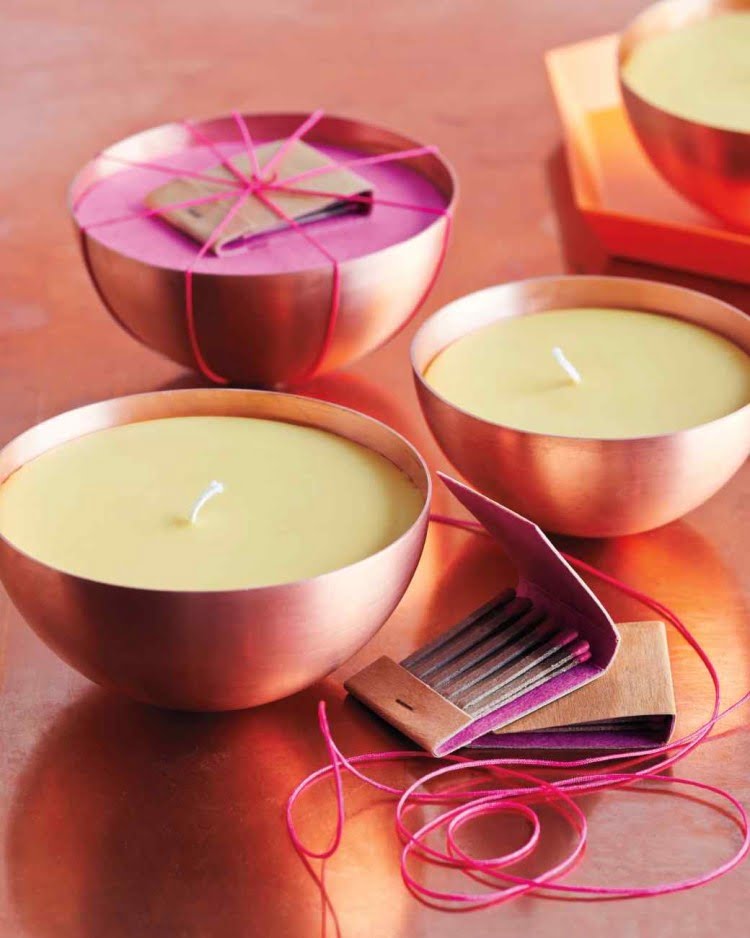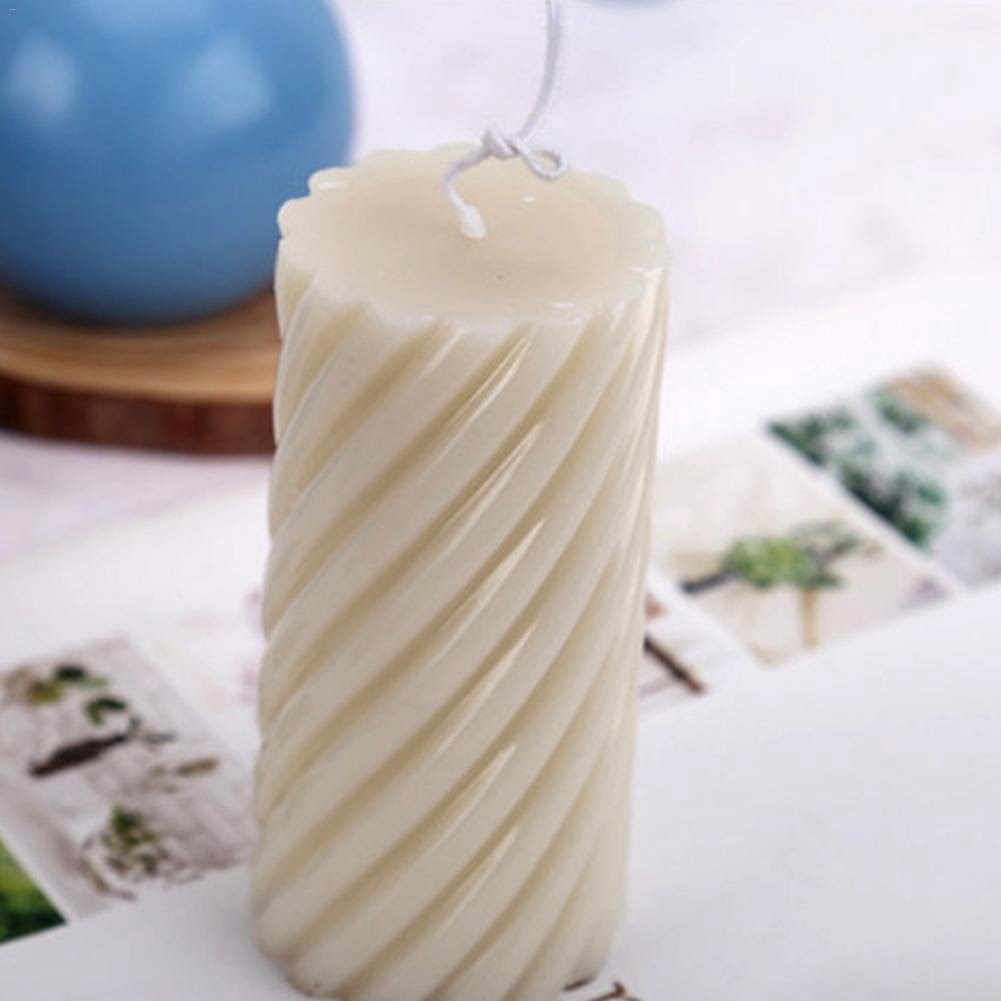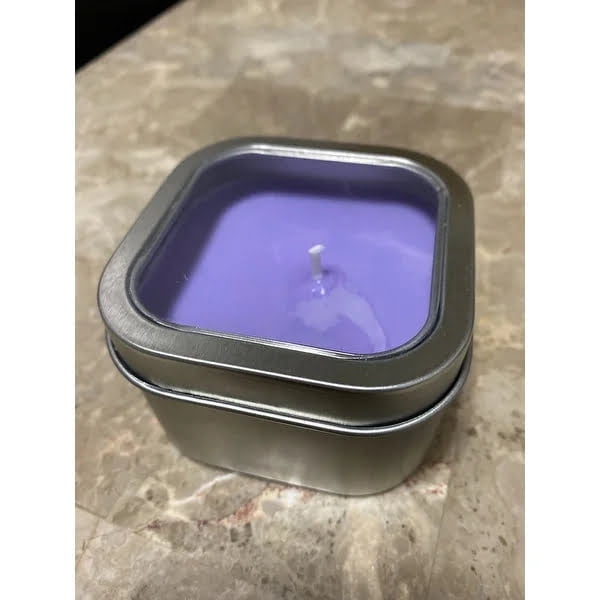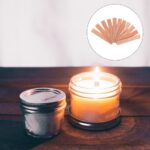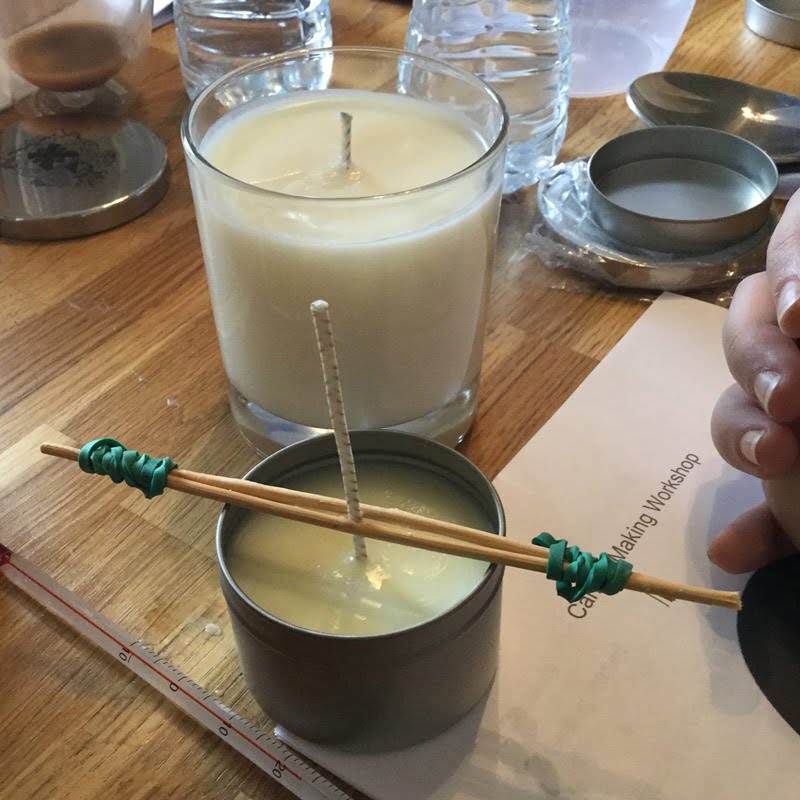Candle making is a craft that has been practiced for centuries, and it continues to captivate both novice and experienced artisans alike. When it comes to adding color to your candles, there are two primary options: liquid dye and block dye. Understanding the differences between these two types of dyes is essential in order to achieve the desired result in your candle making projects.
In this article, we will explore the basics of candle making and delve into the various dye options available to candle makers. Whether you are a seasoned candle maker or just starting out, understanding the characteristics and properties of liquid dye and block dye will help you make an informed decision on which option suits your needs best.
Liquid dye offers convenience and ease of use. It can be easily mixed into melted wax, allowing for precise color customization. On the other hand, block dye offers a solid form that requires melting before being added to wax. Each type of dye has its own set of pros and cons when it comes to working with them in candle making.
Join us as we discuss the advantages and disadvantages of using liquid dye versus block dye in candle making. We will also explore factors that should be considered when choosing a dye for your projects and provide tips and techniques for working with both types of dyes. Whether you prefer vibrant colors or more muted tones, we will help guide you towards making the right choice for your unique candle making endeavors.
Difference between Liquid Dye and Block Dye
When it comes to candle making, choosing the right dye is an important decision that can greatly impact the final product. Two common options for candle dyes are liquid dye and block dye. Understanding the key characteristics and properties of these dyes can help you make an informed choice for your candle making projects.
Liquid Dye
Liquid dye is a popular choice among candle makers due to its ease of use and versatility. This type of dye comes in liquid form and is typically added to melted wax during the candle making process. One of the main advantages of liquid dye is its ability to blend easily with the wax, resulting in a smooth and consistent color throughout the candle.
In addition, liquid dye offers a wide range of color options, allowing you to create vibrant and bold candles. It also allows for more precise color mixing, as you can adjust the amount of liquid dye added to achieve your desired shade. Another benefit of using liquid dye is its quick dispersion in the wax, which reduces the need for additional stirring or mixing.
However, there are some drawbacks to using liquid dye as well. Due to its liquid form, it can be messy and difficult to handle, especially when measuring small amounts. The consistency and strength of liquid dyes may also vary between different brands or manufacturers, so it’s important to choose high-quality dyes from reputable sources.
Block Dye
Block dye, also known as solid or chip dye, is another type of dye commonly used in candle making. As the name suggests, this type of dye comes in solid block or chip form. Block dyes are generally made from concentrated pigments that are mixed into a binding agent such as paraffin wax.
One major advantage of block dyes is their ease of handling and measuring. Since they come in solid form, they can be easily cut or shaved into precise amounts for accurate color control. Block dyes also tend to have a longer shelf life compared to liquid dyes, as their solid form makes them less prone to degradation.
However, when working with block dyes, it’s important to note that they may require additional steps for proper dispersion in the wax. They need to be melted and mixed thoroughly with the wax before pouring it into the candle mold. This extra step can add some complexity and time to the candle making process.
Pros and Cons of Using Liquid Dye in Candle Making
Liquid dye is a popular option for candle makers due to its ease of use and versatility. Here are some pros and cons to consider when using liquid dye in your candle making projects:
Pros:
- Easy to Use: Liquid dye is typically pre-measured and ready to use, making it convenient for both beginners and experienced candle makers. The liquid form allows for easy mixing and blending with the wax, resulting in consistent and even coloring.
- Wide Range of Colors: Liquid dyes offer a vast array of colors to choose from, allowing you to create unique and vibrant candles. Whether you want pastel shades or bold tones, liquid dyes provide endless possibilities for customization.
- More Control over Color Intensity: With liquid dye, you have more control over the intensity of the color in your candles. By adjusting the amount of liquid dye added to the wax, you can achieve various shades and tones, giving you the flexibility to create different effects.
Cons:
- Risk of Overdyeing: One potential drawback of using liquid dye is the risk of overdyeing your candles, especially if you’re not cautious with the amount used. Adding too much liquid dye can result in uneven coloring or even bleeding when lit, affecting the overall quality and appearance of your candles.
- Difficult to Achieve Darker Colors: While liquid dyes offer a wide range of colors, achieving darker shades can be challenging compared to block dyes. If you prefer deep or rich colors in your candles, you may need to experiment with different techniques or consider using block dyes instead.
- Can Affect Scent Throw: In some cases, certain types or brands of liquid dyes may interfere with the scent throw of your candles. It’s important to test different combinations beforehand to ensure that the fragrance remains strong and unaffected by the dyes used.
Advantages and Disadvantages of Utilizing Block Dye for Candle Making
Block dye is a popular option for candle makers due to its unique characteristics and properties. Understanding the advantages and disadvantages of utilizing block dye can help you make an informed decision when choosing the right dye for your candle making projects.
Advantages
- Easy to Use: Block dyes are typically solid, which makes them easy to measure and handle during the candle making process. They can be easily shaved or grated into small pieces, allowing for precise control over the color intensity.
- Long-Lasting Colors: Block dyes are known for their ability to produce vibrant and long-lasting colors in candles. The concentrated nature of block dyes ensures that the color remains vivid even after the candle has been burned.
- Versatility: Block dyes can be mixed together to create custom colors and shades, providing endless possibilities for creativity in candle making. With a range of available colors, including metallic and pearl options, block dyes offer flexibility in achieving various effects and designs.
Disadvantages
- Difficult to Dissolve: Unlike liquid dyes, block dyes require heat to dissolve completely in wax. This can be a time-consuming process as it requires continuous stirring until all the blocks have melted. Failure to dissolve them properly may result in inconsistent coloring or speckles in the finished candles.
- Limited Precision: The solid form of block dyes may make it challenging to achieve very precise or subtle color variations in your candles. While they offer excellent control over color intensity, achieving delicate gradients or intricate patterns may require additional techniques or experimentation.
- Staining Potential: Block dyes have higher chances of staining compared to liquid dyes if not used with caution. It is essential to follow proper safety measures while working with block dye, such as using gloves and protective clothing, to avoid any unwanted stains on your hands or work surfaces.
By considering these advantages and disadvantages, you can make an informed decision on whether to utilize block dye for your candle making projects. Understanding the specific properties and characteristics of block dyes will help ensure successful and satisfying results in your candle creations.
Factors to Consider
When it comes to candle making, choosing the right dye is crucial in achieving the desired color and quality of your candles. There are two main options to consider: liquid dye and block dye. Each type has its own unique characteristics and properties that can greatly impact the outcome of your candle making project. To help you make an informed decision, here are some factors to consider when choosing between liquid dye and block dye.
One important factor to consider is the ease of use. Liquid dyes are typically easier to work with as they come in a liquid form that can be easily measured and mixed into the wax. They also tend to blend more evenly with the wax, resulting in a smoother finish.
On the other hand, block dyes require more effort as they need to be shaved or chopped before they can be added to the wax. This extra step may be time-consuming and can lead to uneven color distribution if not properly melted or mixed.
Another factor to consider is color intensity and vibrancy. Liquid dyes often provide more vibrant colors compared to block dyes. This is because liquid dyes are typically highly concentrated and allow for precise color mixing, giving you more control over the shade you want to achieve. Block dyes, on the other hand, may produce more muted or pastel colors unless used in larger quantities.
It is also important to consider the type of wax you will be using for your candle making project. Some dyes are specifically formulated for use with certain types of wax, such as soy or paraffin wax. Before choosing a dye, make sure to check if it is compatible with the type of wax you plan on using.
In summary, choosing between liquid dye and block dye depends on various factors such as ease of use, color intensity, and compatibility with your chosen wax type. Assessing these factors will help you make an informed decision and ultimately achieve the desired results in your candle making projects.
| Factors to Consider | Liquid Dye | Block Dye |
|---|---|---|
| Ease of Use | Easier to measure and mix into wax. | Requires shaving or chopping before use. |
| Color Intensity | Vibrant colors with precise mixing. | Colors may appear muted unless used in larger quantities. |
| Wax Compatibility | Suitable for various wax types. | Specially formulated for specific wax types. |
Tips and Techniques
One of the dye options to consider when making candles is liquid dye. Liquid dyes are versatile and offer a range of benefits that make them a popular choice among candle makers. In this section, we will explore some tips and techniques for working with liquid dye in candle making.
Measurements and Proportions
When using liquid dye, it is important to use the correct measurements and proportions to achieve the desired color intensity. Start by adding a small amount of liquid dye to your melted wax and gradually increase the amount until you reach the desired shade. It’s always better to start with less and add more as needed, as it can be challenging to lighten a color once it becomes too dark.
Mixing Techniques
To ensure even distribution of color throughout the wax, it is crucial to mix the liquid dye thoroughly. Stir the melted wax gently but consistently, ensuring that the dye is fully incorporated into the wax. Avoid aggressive stirring or whipping, as this can introduce air bubbles into the mixture.
Dye Compatibility
Different types of dyes may have different compatibility with certain waxes or additives. Before using any liquid dye in your candle making, it is recommended to check if it is compatible with your chosen wax base or fragrance oils. Some dyes may not blend well with certain materials, which can lead to uneven coloring or bleeding.
Testing and Experimentation
Candle making is an art form that allows for creativity and personalization. When working with liquid dyes, don’t be afraid to experiment with different combinations and shades. Conduct small test batches before committing to larger projects to ensure you achieve the desired color results.
By following these tips and techniques, you can effectively work with liquid dyes in candle making projects. However, it’s essential to consider both the advantages and disadvantages of using liquid dye compared to block dye before making a final decision. The next section will delve into the pros and cons of utilizing block dye for candle making.
Mastering the Art of Candle Making with Block Dye
Block dye is a popular option for candle makers who prefer a more traditional approach to coloring their candles. Unlike liquid dye, block dye comes in solid form and requires melting before it can be added to the wax. Mastering the art of candle making with block dye requires some know-how and skill, but with the right tips and tricks, you can create beautiful and unique candles.
One of the advantages of using block dye is that it tends to produce more vibrant and intense colors compared to liquid dye. This is because block dyes are typically more concentrated, allowing for richer pigmentation in the wax.
However, it’s important to note that achieving consistent color results with block dye can be a bit trickier, as the melting process may not always distribute the color evenly throughout the wax. To ensure better distribution, it’s recommended to chop or grate the block dye into smaller pieces before melting.
Another tip for working with block dye is to pay attention to temperature control. The temperature at which you add the melted block dye into your wax can greatly impact how well it incorporates and adheres to the wax.
If the wax is too hot, it may cause the color to separate or bleed; if it’s too cool, it may result in clumps or uneven coloring. It’s essential to experiment with different temperatures and observe how they affect the final outcome of your candles.
When using block dye, be mindful of the amount you use as well. Start with a small amount and gradually add more until you achieve your desired color intensity. Keep in mind that a little goes a long way with block dyes due to their concentrated nature. Additionally, keep track of the ratios and measurements used so that you can recreate colors consistently in future projects.
In summary, working with block dyes requires some practice and attention to detail, but once mastered, they offer great potential for creating vibrant and unique candles. By following these tips and tricks, you can enhance your skills in candle making and achieve stunning results with block dyes.
Achieving Vibrant Colors
Achieving vibrant colors is an important aspect of candle making, as it enhances the aesthetic appeal of the final product. Both liquid dye and block dye offer different ways to achieve vibrant colors in candle making. In this section, we will compare and contrast the effectiveness of these two dye options in creating vibrant colors.
Liquid dyes are highly concentrated colorants that are available in a wide range of colors. They are usually sold in small bottles or dropper containers, allowing for precise measurement and easy blending to create custom shades. Liquid dyes dissolve quickly and evenly in liquid wax, resulting in consistent color distribution throughout the candle.
On the other hand, block dyes are solid pigments that come in tablet or block form. These dyes need to be shaved or grated before they can be added to the melted wax. Block dyes offer a greater variety of color options compared to liquid dyes and can be mixed together to create unique shades. However, achieving vibrant colors with block dyes requires thorough mixing and may take longer compared to liquid dyes.
To summarize, both liquid dye and block dye can help achieve vibrant colors in candle making. Liquid dye offers ease of use and quick results with its ability to dissolve evenly in liquid wax, while block dye provides a wider color selection and allows for custom shade creation through mixing. The choice between liquid dye and block dye ultimately depends on personal preference, desired colors, and the specific requirements of each candle making project.
| Aspect | Liquid Dye | Block Dye |
|---|---|---|
| Color Options | Wide range of colors | Greater variety |
| Mixing Ease | Easy | Requires thorough mixing |
| Consistency | Even color distribution | May take longer to achieve vibrant colors |
| Preparation | No preparation required | Shaving or grating needed |
Final Verdict
When it comes to choosing between liquid dye and block dye for your candle making projects, the decision ultimately depends on your specific needs and preferences. Both options have their own set of advantages and disadvantages that can greatly impact the final outcome of your candles. To make an informed decision, it’s important to consider several factors.
- Ease of use: Liquid dyes are generally easier to work with compared to block dyes. They can be easily incorporated into the wax by simply measuring and adding the desired amount. On the other hand, block dyes need to be melted and mixed thoroughly with the wax before pouring them into the mold.
- Color intensity: If you’re looking for vibrant and bold colors, liquid dyes may be the better option for you. Liquid dyes tend to create more intense colors as they dissolve completely in the wax. Block dyes, on the other hand, may result in softer shades unless a larger quantity is used.
- Versatility: Liquid dyes offer greater versatility when it comes to color blending. With liquid dyes, you can easily experiment with different shades by mixing different colors together. Block dyes may not be as versatile in terms of color mixing due to their solid form.
- Storage: When it comes to storage, both options have their pros and cons. Liquid dyes usually come in small bottles or containers that are easy to store and keep organized. On the other hand, block dyes take up more space and require proper sealing or packaging to prevent them from drying out or losing their potency over time.
Making the Right Choice
When it comes to choosing between liquid dye and block dye for candle making, personal recommendations and considerations based on experience can play a crucial role in making the right choice. Both options have their own advantages and disadvantages, so it is important to weigh them against your specific needs and preferences.
For those who are just starting out in candle making or prefer convenience, liquid dye may be the preferred option. Liquid dyes offer ease of use as they can be easily measured and mixed into the wax without any additional preparation. They also tend to mix more evenly, resulting in consistent color distribution throughout the candle. Additionally, liquid dyes often provide a wider range of color options compared to block dyes.
On the other hand, experienced candle makers or those seeking more control over their colors may lean towards using block dye. Block dyes require melting before being added to the wax, which may take extra time and effort. However, this preparation allows for more precise color mixing as you can adjust the amount of dye according to your desired shade. Block dyes are also known for producing vibrant and intense colors that are difficult to achieve with liquid dyes alone.
Personal recommendations from fellow candle makers can also be valuable in determining which type of dye to choose. Engaging with online communities or forums dedicated to candle making can provide insights into different techniques and experiences regarding both liquid and block dyes. Hearing about others’ successes and challenges can help inform your decision-making process.
Ultimately, the choice between liquid dye and block dye should depend on your specific preferences, experience level, and desired outcome for your candle making projects. Whether you prioritize convenience or vibrant colors, understanding the characteristics and properties of each option will help you make an informed decision that aligns with your goals as a candle maker.
To summarize:
- Liquid Dye: Pros include ease of use, consistent color distribution, and a wide range of color options. Cons include limited control over shades and possibly less vibrant colors.
- Block Dye: Pros include precise color mixing, vibrant and intense colors, and the ability to achieve unique shades. Cons include extra preparation time and potentially more effort during the melting process.
Consider seeking recommendations from experienced candle makers in online communities or forums dedicated to candle making. Ultimately, the decision should be based on your personal preferences, experience level, and desired outcome for your candle making projects.
Conclusion
In conclusion, when it comes to choosing between liquid dye and block dye for candle making, there is no one-size-fits-all answer. Each option has its own set of advantages and disadvantages that should be carefully considered before making a decision.
Liquid dyes offer ease of use and versatility, as they can be easily mixed to create custom colors. They also blend well with wax, resulting in more uniform and consistent color distribution throughout the candle. However, they can be more expensive than block dyes and may require additional testing to achieve desired shades.
On the other hand, block dyes are cost-effective and can produce vibrant and intense colors in candles. They are also convenient to use as they do not require any measuring or mixing. However, they may not blend as evenly with the wax compared to liquid dyes, resulting in a mottled or streaky appearance if not properly melted and incorporated.
Ultimately, the choice between liquid dye and block dye will depend on your personal preferences, budget, and the specific look you want to achieve in your candles. It is recommended to start by experimenting with both options on smaller batches before committing to larger production runs.
Additionally, keep in mind that factors such as fragrance oils used, wax type, pouring temperature, and curing time can also impact the final color outcome of your candles. It is important to thoroughly research and test different combinations to find your perfect match – whether it be liquid dye or block dye – for achieving the vibrant colors you desire in your candle making projects.
Frequently Asked Questions
What kind of dye is best for candle making?
When it comes to choosing the best dye for candle making, it largely depends on personal preference and the desired outcome. There are various types of dyes available in the market specifically formulated for candle making. Some popular options include liquid dyes, powdered dyes, and chip dyes.
Liquid dyes offer ease of use as they can be directly incorporated into the melted wax without requiring any additional preparation. Powdered dyes, on the other hand, allow for more control over color intensity as they can be easily measured and mixed with the wax. Ultimately, choosing the best dye for candle making involves considering factors such as desired color intensity, ease of use, and compatibility with different types of wax.
Can I use liquid dye for candles?
Yes, liquid dye can indeed be used for candles. Liquid dyes are a popular choice among candle makers due to their convenience and ease of use. They are typically formulated specifically for candle making and come in a wide range of colors.
Liquid dyes can be added directly to the melted wax during the creation process and do not require any additional mixing or preparation steps. They often offer vibrant and consistent colors when carefully measured and incorporated into the wax according to the instructions provided by the manufacturer. However, it’s important to note that each type of dye may have its own set of instructions or recommended usage guidelines that should be followed for optimal results.
What is the best way to dye candle wax?
The best way to dye candle wax depends on several factors including the type of dye being used and personal preference. One common method is to add dye chips or blocks directly into the melted wax while stirring until they completely dissolve and incorporate evenly into the mixture. This method works well with both chip dyes as well as some powdered dyes that have been pre-mixed into chips or blocks form for easier measurement.
Another option is using liquid or oil-based dyes where you can carefully measure out the desired amount according to the manufacturer’s instructions before adding it to your melted wax. Some candle makers also prefer to dye the wax prior to pouring it into candle molds or containers, allowing for a more solid and consistent color throughout the entire candle. Ultimately, determining the best way to dye candle wax will involve experimentation and finding a method that achieves the desired color and consistency.

Welcome to my candle making blog! In this blog, I will be sharing my tips and tricks for making candles. I will also be sharing some of my favorite recipes.

